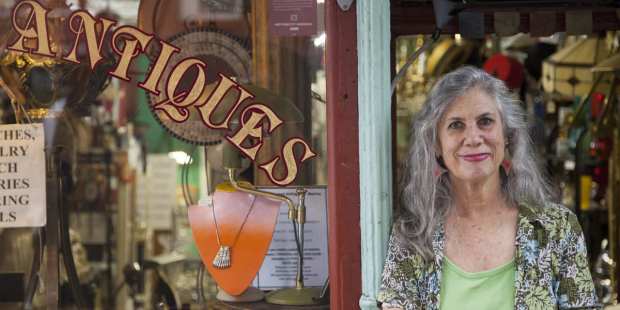How Main Street Businesses Honed Their Survival Skills In 2020

For Main Street businesses, to say 2020 was challenging is an understatement.
The good news, according to PYMNTS data, is that as 2020 is coming to a close, small- to medium-sized businesses (SMBs) are feeling genuinely more confident about their odds of continued survival than they were when the pandemic began. In June, less than half of SMBs surveyed by PYMNTS said they would survive into summer 2022 — as of the close of 2020, that figure is now up to 54 percent. And SMB formation is at a multi-year high, as estimated by the Census Bureau.
These SMBs have spent the year forcibly pursuing their own survival and getting digital and inventive about how they’ve done it. According to PYMNTS data, more than 60 percent of Main Street firms have at least three channels operating to drive sales: online, at physical stores and mobile. Seventy-one percent use online channels, 68 percent use physical stores, 66 percent use mobile and 59 percent use marketplaces.
Beyond the numbers, PYMNTS has spent the year talking to SMB owners nationwide, hearing directly from those in the trenches about their biggest challenges and how they survived.
For example, Philadelphia restaurateur Tamekah Bost told PYMNTS in a digital round table discussion that the secret to staying alive in 2020 has been openness to reinvention at a moment’s notice.
“We [looked] toward changing our business model from dine-in to having takeout kiosks at places where people have to go and are deemed essential, which is supermarkets. So, this past October, we opened our first kiosk location inside of the supermarket,” she said, featuring what she termed a “greatest hits” range of offerings.
Haley Fortier, operator of Boston wine bar haley.henry, told PYMNTS that much of the year was based on taking things the company already knew it could do well, and then finding ways to make them work via digital channels. The strategy enabled the bar to hold on to its loyal customer base during the worst of the pandemic shutdowns earlier this year. And, she noted, it meant avoiding the wrong kind of help.
“We just did it all ourselves,” she said. “There were so many outlets like Caviar and DoorDash that you could order from, but they take 30 percent of the profit, so it didn’t make sense for us. We just did all of our deliveries ourselves to conserve money and give it back to the business.”
But for all the radical resilience and self-reliance the year called for among SMB owners, there has also been a rush among players in the field to find ways to help the SMB community stay active and attractive during the pandemic period.
Aid has notably come in from all corners, particularly the card networks. The Visa Foundation has launched several new initiatives aimed at providing nearly $5 million in capital to minority-owned SMBs and microbusinesses to help them weather the pandemic. Mastercard, meanwhile pledged $250 million to SMB aid early and the pandemic and continued building on its offering throughout the year, including the autumn launch of the Small Business Digital Readiness Diagnostic tool.
“In the midst of a massive shift to digital spending, businesses everywhere and of every size are trying to appeal to a changed and changing consumer,” said Dimi Dosis, Mastercard’s president of Advisors, in a statement. “With the Mastercard Small Business Digital Readiness Diagnostic, our mission is to help as many small businesses as possible better understand and expand their digital capabilities so they are positioned to seize the online opportunity and future-proof their business.”
American Express, meanwhile, hosted its annual “Shop Small” event twice in 2020 — once during its normal holiday season run, as well as in June as SMBs were starting to re-open and were looking for assistance drawing their customer’s back.
“Right at the beginning when the pandemic started, we were in touch with every single one of our acquiring partners,” American Express’ Kathleen Fiorello, vice president and head of U.S. Third Party Acquiring & Global Acquisition Capabilities told PYMNTS. “And the first thing they said when we were talking to them was: ‘What can do to help support our collective small business partners?’”
The card networks have been far from alone in their jump to supporting SMBs. Amazon and Goldman Sachs jointly launched a credit line targeted at SMB owners in June, while eBay sent $500,000 in grants to SMBs owners to help them weather the storm earlier this year.
“Small businesses are the backbone of eBay, as well as the engine of jobs, progress and prosperity for communities across the U.S.,” said Jordan Sweetnam, general manager and senior vice president for eBay North America, at the time of the announcement. “The launch of eBay’s Up & Running Grants program comes at a time when small businesses need investment and empowerment most.”
In addition, PayPal in June announced a commitment of $530 million to support Black- and minority-owned businesses and communities. It also continues to maintain PayPal Working Capital (PPWC) which was formed to fill the gap in access to financing and data for SMBs.
Shopify, which also has an SMB financing arm, made news in June when it teamed up with Walmart to expand its third-party marketplace to help SMBs get more business during the pandemic. At the time, Jeff Clementz, Walmart Marketplace vice president, said the retailer will add 1,200 SMB sellers from Shopify to Walmart.com this year.
Will it be enough to save every SMB pummeled by the pandemic this year? No. But will more have survived than otherwise going into 2021? Almost certainly.
